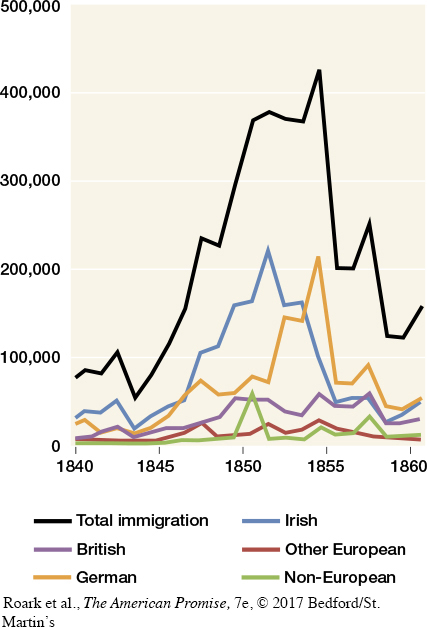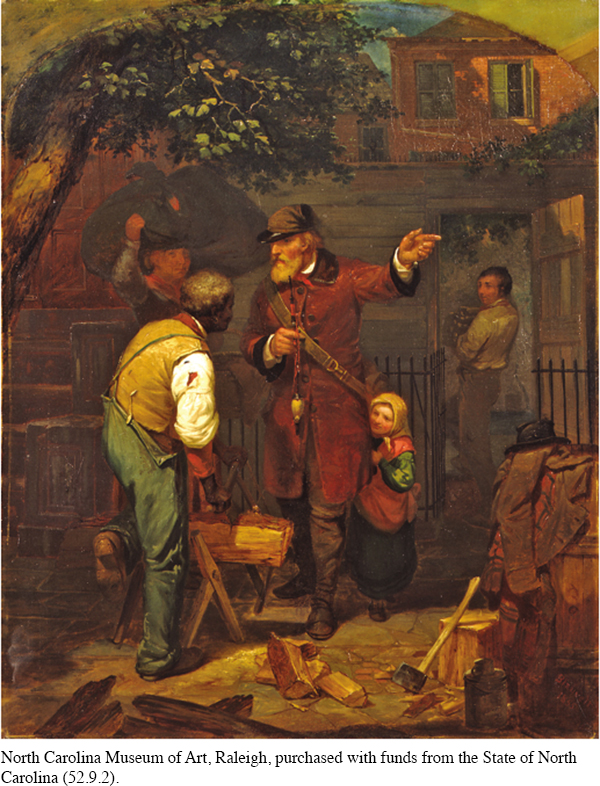The American Promise: Printed Page 322
The American Promise, Value Edition: Printed Page 296
The American Promise: A Concise History: Printed Page 337
Immigrants and the Free-Labor Ladder

The risks and uncertainties of free labor did not deter millions of immigrants from entering the United States during the 1840s and 1850s. Almost 4.5 million immigrants arrived between 1840 and 1860, six times more than had come during the previous two decades (Figure 12.1).
Nearly three-
The American Promise: Printed Page 322
The American Promise, Value Edition: Printed Page 296
The American Promise: A Concise History: Printed Page 337
Page 323Irish immigrants, in contrast, entered at the bottom of the free-
Roughly three out of four Irish immigrants worked as laborers or domestic servants. Irish men dug canals, loaded ships, laid railroad track, and did odd jobs while Irish women worked in the homes of others—

The American Promise: Printed Page 322
The American Promise, Value Edition: Printed Page 296
The American Promise: A Concise History: Printed Page 337
Page 324In America’s labor-
Amidst the opportunities for some immigrants and native-
REVIEW How did the free-